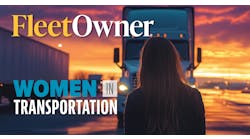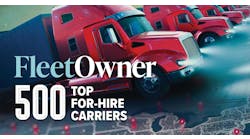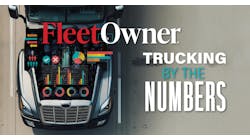It’s not uncommon for less-than-truckload freight volumes to decrease. However, enduring a soft market, falling freight-hauling rates, and rising equipment costs and pay scales all at once is not common. For Mike Moran, president of Moran Transportation, this business environment isn’t as much a cause for concern as it is a call to action.
The Elk Grove, lllinois-based company operates nine terminals in Illinois, Indiana, Wisconsin, Minnesota, Iowa, and Missouri that provide regional LTL and less-than-container load services.
“We’re holding our own in this market by working more diligently to keep pricing in place and by continually delivering better service to customers,” Moran’s president said. “What we’ve learned is that investing in technology, equipment, and people is the path to success all the time—and especially in hard times.”
Five years ago, Moran laid the foundation for its operation with FACTS freight management software from Carrier Logistics Inc. To address several challenges, the carrier recently added new modules.
“We needed to properly determine rates, equipment needs, and accessorial charges because with EDI-based data exchange for load information, as much as 45% of our freight bills required adjustments,” Moran explained. “Inaccurate or incomplete delivery location information also hampered our ability to correctly rate shipments and dispatch the correct equipment.”
See also: Report to dive deep into fleet operations
With CLI’s new LOC-AI module, Moran is automating shipment location information so that it can correctly apply charges and plan dispatches more effectively. Additionally, CLI has automated the process of integrating data from the carrier’s freight dimension technology to accurately measure and weigh shipments.
Moran has also addressed dock-related errors that led to freight being misdirected. “The CLI Dock Management System improves accuracy and control by directing freight to the right door and truck and by reducing the number of misloads or the delivery of partial loads by flagging incomplete orders,” Moran explained.
“With FACTS, we’ve realized administrative time and cost savings by implementing automated processes for rating, billing, and dispatching, including enabling a single dispatcher to manage as many as 95 trucks from a single terminal,” he added.
At a time when carriers may be inclined to reduce capital spending, Moran pointed out the company is taking the opposite approach this year by adding 85 new Freightliner and International power units.
“We want to have a solid base of equipment for the growth we have planned,” he added. “At the same time, we’re looking at the higher cost of upcoming engine requirements, so we wanted to bring new units into the fleet sooner.”
Moran also is taking a different approach to sourcing new power units. “Our finance team ran an analysis, and we realized that full-service leasing gave us the lowest costs,” he stated. “With our leasing partners at Ryder and Aim NationaLease, we’re guaranteed replacement units if a breakdown occurs. The struggle we’ve had finding technicians played into the decision as well.”
“With leasing, we get equipment with the specs we need faster at a set cost,” Moran added. “The math makes sense, and leasing means we have the fewest headaches.”
To address a shift in its business model, Moran is acquiring new Hyundai trailers. “We’re using fewer straight trucks and more trailers, including a growing number with liftgates,” he explained. “That gives us more flexibility and greater carrying capacity, which puts more revenue-generating freight on each unit.”
By improving its operating ratio, Moran is able to invest elsewhere, including a recent increase of 35% in driver pay and more benefits. The higher wages reflect the ongoing need for drivers and their feedback. Moreover, flex scheduling and health savings accounts have been implemented based on survey responses.
“Our new safety bonus program has also been exceptionally well-received because we’re giving drivers the ability to earn more,” Moran said. “Dollars and cents can be a game-changer because it creates competition to improve, and this program is also driving our safety scores in the right direction.”
“Our equipment, technology, and benefits are all enticements for new applicants and existing drivers,” he continued. “We also believe that our family-focused culture is a big reason people want to work for us and why we’ve been continually successful for the past 43 years.”




